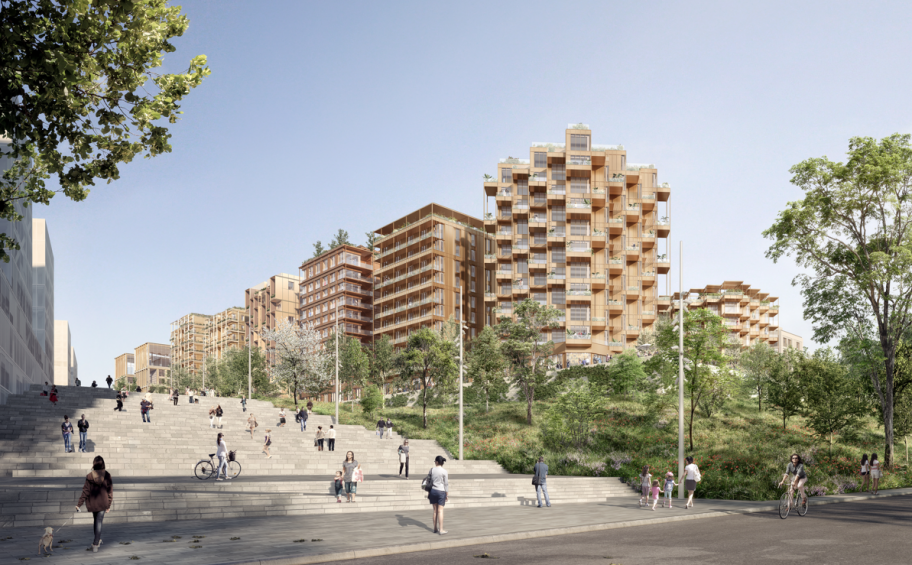The consortium composed of Nexity, Eiffage Immobilier, CDC Habitat, the EDF Group and the Groupama Group has announced the launch of the construction site for sector E of the Athletes' Village in Saint-Ouen-sur-Seine. The Athletes' Village is the largest single-site construction project in France, bringing together more than 4,000 construction workers and meeting the dual challenge of economic recovery and environmental performance.
In line with our unique builder-developer model, Eiffage Construction teams will carry out the work for Eiffage Immobilier.
Sector E of the Athletes' Village will cover approximately 58,000 sqm of floor space for 527 housing units (open access, rental housing (LLI and LAC) and social housing), an office building, a crèche and business and commercial premises. It will welcome around 2,500 athletes and para-athletes in the summer of 2024, and from 2025 onwards, future residents of Audon in a new mixed neighbourhood with an enhanced quality of life.
The complex is of high architectural quality and has been designed to meet environmental and societal challenges, thus leaving the inhabitants of Saint-Ouen a sustainable legacy, thanks in particular to an economical construction method combining wood and low-carbon concrete. The wood used for the load-bearing structures will be 80% from Metropolitan France (target), both for the resource and for its transformation. In addition, energy consumption will be reduced thanks to intelligent energy management combined with the production of photovoltaic electricity on the roof, which will cover approximately 20% of the needs generated by the district. In addition, an innovation on the district's tertiary building will make it possible to limit CO2 emissions by integrating vehicle batteries as a source of electricity to smooth out consumption peaks. The design also leaves a lot of room for vegetation and soil desartificialisation (increased biodiversity) to actively combat urban heat islands and anticipate climate change, with 20% of the land planted and local species integrated from the ground to the roofs, and divided into several atmospheres and layers: messicolous plants, a nursery of wild plants, a large shared garden in the image of the traditional market gardens of Saint-Ouen, but also a vertical landscape on the large balconies and green terraces.

